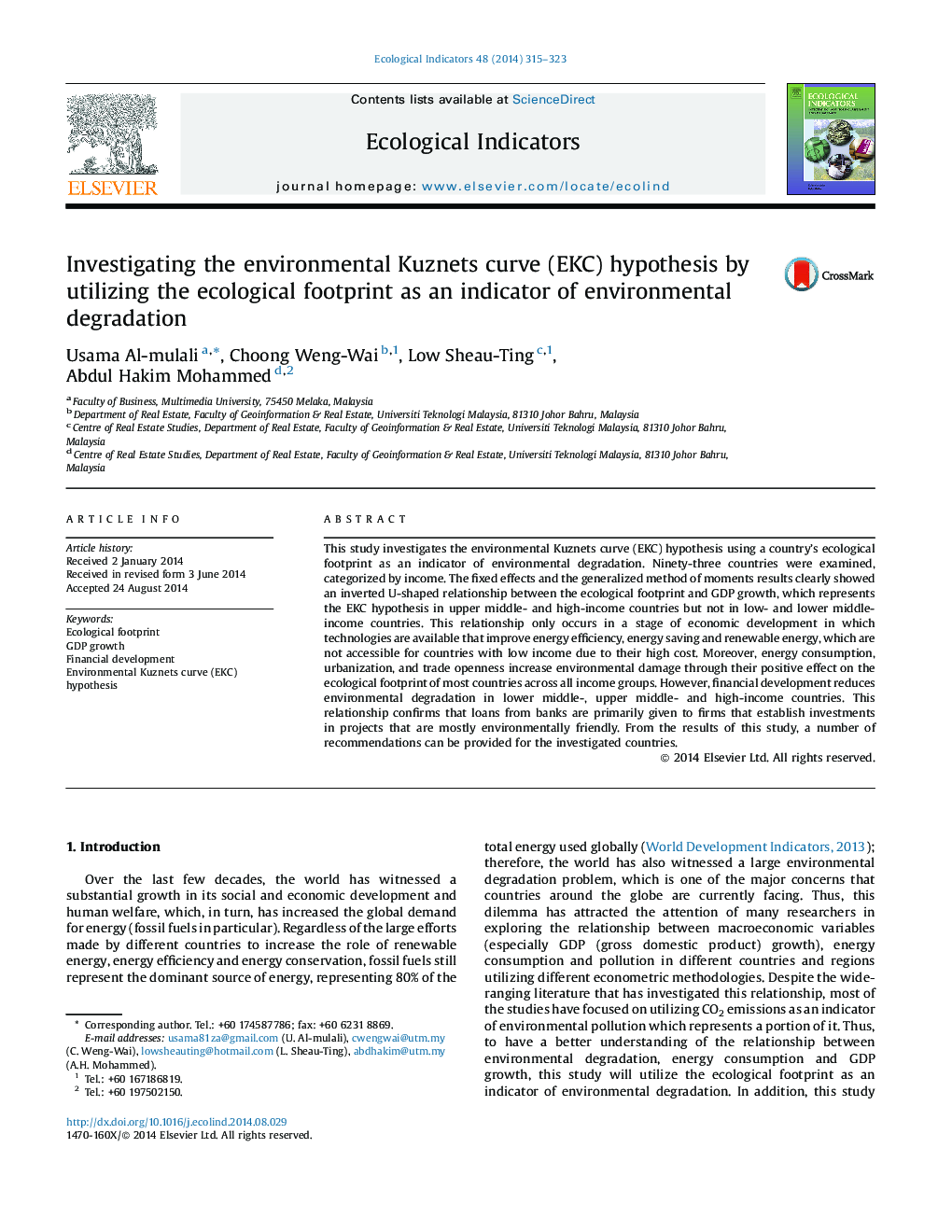| کد مقاله | کد نشریه | سال انتشار | مقاله انگلیسی | نسخه تمام متن |
|---|---|---|---|---|
| 6295019 | 1617153 | 2015 | 9 صفحه PDF | دانلود رایگان |
عنوان انگلیسی مقاله ISI
Investigating the environmental Kuznets curve (EKC) hypothesis by utilizing the ecological footprint as an indicator of environmental degradation
دانلود مقاله + سفارش ترجمه
دانلود مقاله ISI انگلیسی
رایگان برای ایرانیان
کلمات کلیدی
موضوعات مرتبط
علوم زیستی و بیوفناوری
علوم کشاورزی و بیولوژیک
بوم شناسی، تکامل، رفتار و سامانه شناسی
پیش نمایش صفحه اول مقاله

چکیده انگلیسی
This study investigates the environmental Kuznets curve (EKC) hypothesis using a country's ecological footprint as an indicator of environmental degradation. Ninety-three countries were examined, categorized by income. The fixed effects and the generalized method of moments results clearly showed an inverted U-shaped relationship between the ecological footprint and GDP growth, which represents the EKC hypothesis in upper middle- and high-income countries but not in low- and lower middle-income countries. This relationship only occurs in a stage of economic development in which technologies are available that improve energy efficiency, energy saving and renewable energy, which are not accessible for countries with low income due to their high cost. Moreover, energy consumption, urbanization, and trade openness increase environmental damage through their positive effect on the ecological footprint of most countries across all income groups. However, financial development reduces environmental degradation in lower middle-, upper middle- and high-income countries. This relationship confirms that loans from banks are primarily given to firms that establish investments in projects that are mostly environmentally friendly. From the results of this study, a number of recommendations can be provided for the investigated countries.
ناشر
Database: Elsevier - ScienceDirect (ساینس دایرکت)
Journal: Ecological Indicators - Volume 48, January 2015, Pages 315-323
Journal: Ecological Indicators - Volume 48, January 2015, Pages 315-323
نویسندگان
Usama Al-mulali, Choong Weng-Wai, Low Sheau-Ting, Abdul Hakim Mohammed,